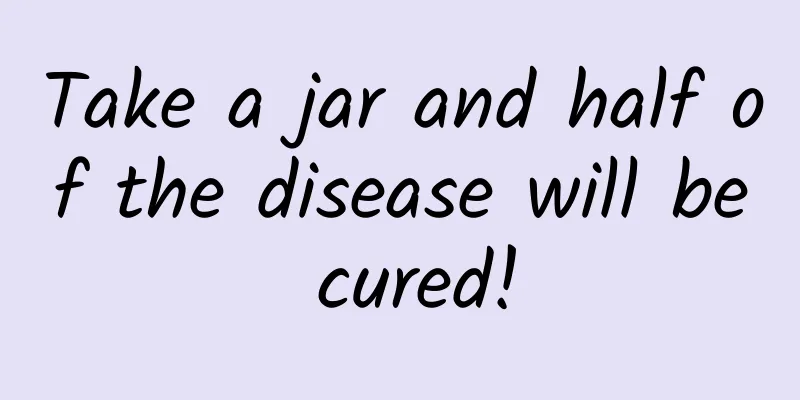How many days will the menstruation come?

|
Everyone has different symptoms before menstruation due to different physical conditions and lifestyles. Some people have chest swelling, some have back pain, some have sore legs, and some have stomach pain. Menstruation basically starts about a week after these symptoms. In fact, each type of menstrual symptom indicates a different physical problem. This article introduces the relevant content about breast pain. Let’s take a look at it. Cyclic breast pain Cyclic breast pain is related to the way breast tissue responds to the monthly changes in estrogen and progesterone levels. If breast pain is accompanied by a lump, cyst (a mass of fluid), or thickened area, these conditions are often called fibrocystic changes. During each menstrual cycle, breast tissue swells because hormones stimulate the dilation of the milk ducts in the breasts. You may experience breast swelling, pain, tenderness, or lumps before your period. Breast pain and swelling usually go away when your period comes. The average age of women with cyclical breast pain is 34. Cyclic breast pain may persist for years but usually disappears after menopause unless hormone replacement therapy (HRT) is used. Cyclic breast pain accounts for nearly 75% of all breast discomfort symptoms. Two-thirds of women who experience breast pain experience cyclical breast pain. Doctors often use a chart of the person's pain to determine whether the pain is cyclical. While cyclical breast pain is often related to the menstrual cycle, stress can also affect hormone levels and cause breast pain. Physical activity, especially heavy or prolonged use of the arms, has also been shown to increase breast pain (the pectoralis (chest) muscles may cause pain due to physical activity). Non-cyclical breast pain Non-cyclical breast pain is much less common than cyclical breast pain and is not related to the menstrual cycle. Non-cyclical breast pain tends to occur in a specific area of the breast. Women often experience noncyclic pain when their breasts are injured or traumatic or when they have had a biopsy. This pain may occur in both premenopausal and postmenopausal women and usually subsides after 1 to 2 years. Noncyclic pain is most common in women aged 40 to 50. Although women should discuss breast pain with their doctors in general, noncyclical breast pain is not necessarily associated with breast cancer. Another type of noncyclic pain is called costochondritis, which does not actually occur in the breast; however, the pain may feel like it is coming from the breast. The pain of this type of arthritis occurs in the midline of the chest, where the ribs connect to the breastbone. Costochondritis may be related to poor posture or the onset of aging. Women with costochondritis often describe the pain as a burning sensation in the breast. Other factors that may cause breast pain in some women include: oral contraceptive pills; hormone replacement therapy; weight gain; and wearing an ill-fitting bra. What to do if you have breast pain Breast pain is divided into three degrees: first degree is pain when touched with the hand and no treatment is required; second degree is pain when moving and you can consider taking medicine; third degree is pain when still, that is, pain even when lying in bed and you should see a doctor. In addition to breast pain, the hardness of the breasts can also be graded: one degree is as soft as the lips, two degrees is moderately soft and hard like the nose, and three degrees is as hard as the forehead. But whether it is soft or firm, it does not indicate any disease. Many women feel a lump in their breasts while experiencing pain. If the left and right sides are symmetrical, then it can be considered as normal hyperplasia; if the tumor changes before and after menstruation, then there is no need to worry about cancer. Experts say that all women over 35 should undergo regular breast screening, because Chinese women generally develop breast cancer earlier than European and American women, with the peak incidence concentrated in the 40s and 50s. If a woman under 35 has severe breast pain that affects her daily life and she feels a lump, she should seek medical treatment. Clinically, it is found that if cyclical breast pain is assumed to be related to menstruation, the treatment effect is often more obvious. The more irregular the pain, the more difficult it is to treat, because it may not be affected by hormone levels. |
<<: Red vaginal discharge after menstruation
>>: Why do my eyelids swell during menstruation?
Recommend
Is leucorrhea cleanliness level 3 serious?
Leucorrhea cleanliness level three actually indic...
Why do women get angry easily during menstruation?
Menstruation is a very normal physiological pheno...
What should I do if my menstruation is delayed for a long time?
Generally speaking, menstruation only lasts for t...
How long does it take for a cervical biopsy wound to heal?
The cervix is located at the deepest part of th...
Can I send baby's breath on Chinese Valentine's Day? What is the meaning of baby's breath?
Gypsophila, formerly known as cone stone flower, ...
Success rate of intrauterine adhesion surgery
Intrauterine adhesion is one of the gynecological...
Cancer is different for men and women? Exploring the gender preference of cancer
I heard that cancer favors boys over girls?! This...
Yellow vaginal discharge after laparoscopic surgery
The yellowing of leucorrhea after laparoscopic su...
What are the factors that cause low libido in women?
When it comes to the sensitive topic of sex, both...
Is it good to have a baby if you have a big butt?
For the buttocks, people seem to prefer larger on...
Dietary taboos for pregnant women
Pregnant women are people who need special care, ...
What will happen if you take medicine in the first month of pregnancy?
Generally speaking, the period of time when a pre...
Can I get pregnant one month after having an abortion?
Terminating a pregnancy by human or medical means...
Is it okay for women to masturbate frequently?
Masturbation mostly happens to men, but in fact w...









